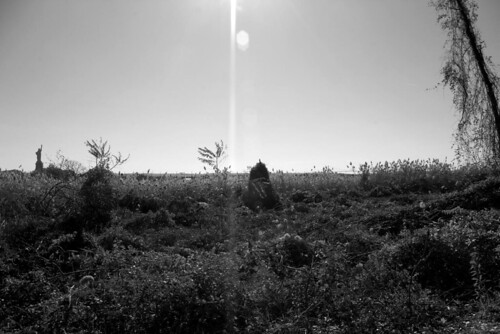Some years ago the
late Kenneth Boulding had created an organization had created an organization for retired academics who were still lively of mind. I forget what he called it, but as things worked out he was at a cybernetics conference I was attending and I bumped into him in line for a breakfast table. "So how's your organization for geriatric genius?" I asked him. He was amused and we had breakfast together.
The portraits here are of men and women in their 80s and 90s, rich in the rewards of substantial and celebrated careers, and although I know none of them except by name and reputation, I’m asked why their love’s labor is not lost but still to be found. Why do they persist, the old masters? To what end the unceasing effort to discover or create something new? Why not rest on the laurels and the oars?
The short answer is Dr. Samuel Johnson’s, in a letter to James Boswell in 1777: “Depend upon it, sir, when a man knows he is to be hanged in a fortnight, it concentrates his mind wonderfully.” A longer answer is that of the 19th-century Japanese artist Hokusai, who at 75 added a postscript to the first printing of his “One Hundred Views of Mount Fuji”:
“From the time that I was 6 years old I had the mania of drawing the form of objects. As I came to be 50 I had published an infinity of designs; but all that I have produced before the age of 70 is not worth being counted. It is at the age of 73 that I have somewhat begun to understand the structure of true nature, of animals and grasses, and trees and birds, and fishes and insects; consequently at 80 years of age I shall have made still more progress; at 90 I hope to have penetrated into the mystery of things; at 100 years of age I should have reached decidedly a marvelous degree, and when I shall be 110, all that I do, every point and every line, shall be instinct with life — and I ask all those who shall live as long as I do to see if I have not kept my word.”
Hokusai got it right. Of course, though, it depends on your field. Not all endeavors can benefit from accumulated knowledge and experience. It depends.
• • the people featured • •
Frederick Wiseman, filmmaker, 84. Wiseman’s documentary ‘‘National Gallery’’ had its premiere at the Directors’ Fortnight at Cannes this year.
T. Boone Pickens, chairman of BP Capital Management, 86.
Justice Ruth Bader Ginsburg, 81, of the Supreme Court.
Edward O. Wilson, naturalist and author, 85. Wilson published a book, ‘‘The Meaning of Human Existence,’’ this year. It is the second in a trilogy.
Roy Haynes, jazz drummer and bandleader, 89. Haynes’s latest album was ‘‘Roy-Alty,’’ released in 2011.
Carmen Herrera, painter, 99. Herrera sold her first painting at age 89. Today her work is in the permanent collections at the Museum of Modern Art and the Tate Modern.
Ginette Bedard, long-distance runner, 81. Bedard will run in her 12th consecutive New York City Marathon this year.
Tony Bennett, singer, 88, released ‘‘Cheek to Cheek,’’ an album of duets with Lady Gaga, this year. It debuted at No. 1 in Billboard.
Ellsworth Kelly, artist, 91. Last year, President Obama presented Kelly with the National Medal of Arts.
Christopher Plummer, actor, 84. In 2012, Plummer won the Academy Award for best supporting actor for his role in ‘‘Beginners,’’ making him the oldest actor to win the award.
R. O. Blechman, illustrator and author, 84. In 2009, Blechman published the book ‘‘Dear James: Letters to a Young Illustrator.’’
Carl Reiner, actor, 92. Reiner published his second memoir, ‘‘I Just Remembered,’’ this year.
Frank Gehry, architect, 85. Gehry’s latest project was the Fondation Louis Vuitton in Paris, an arts center sponsored by the LVMH Fashion Group.
Senator Dianne Feinstein, 81. Feinstein has been a member of the United States Senate since 1992.
Betty White, actress, 92. White currently stars in the TV Land original sitcom ‘‘Hot in Cleveland.’’




























